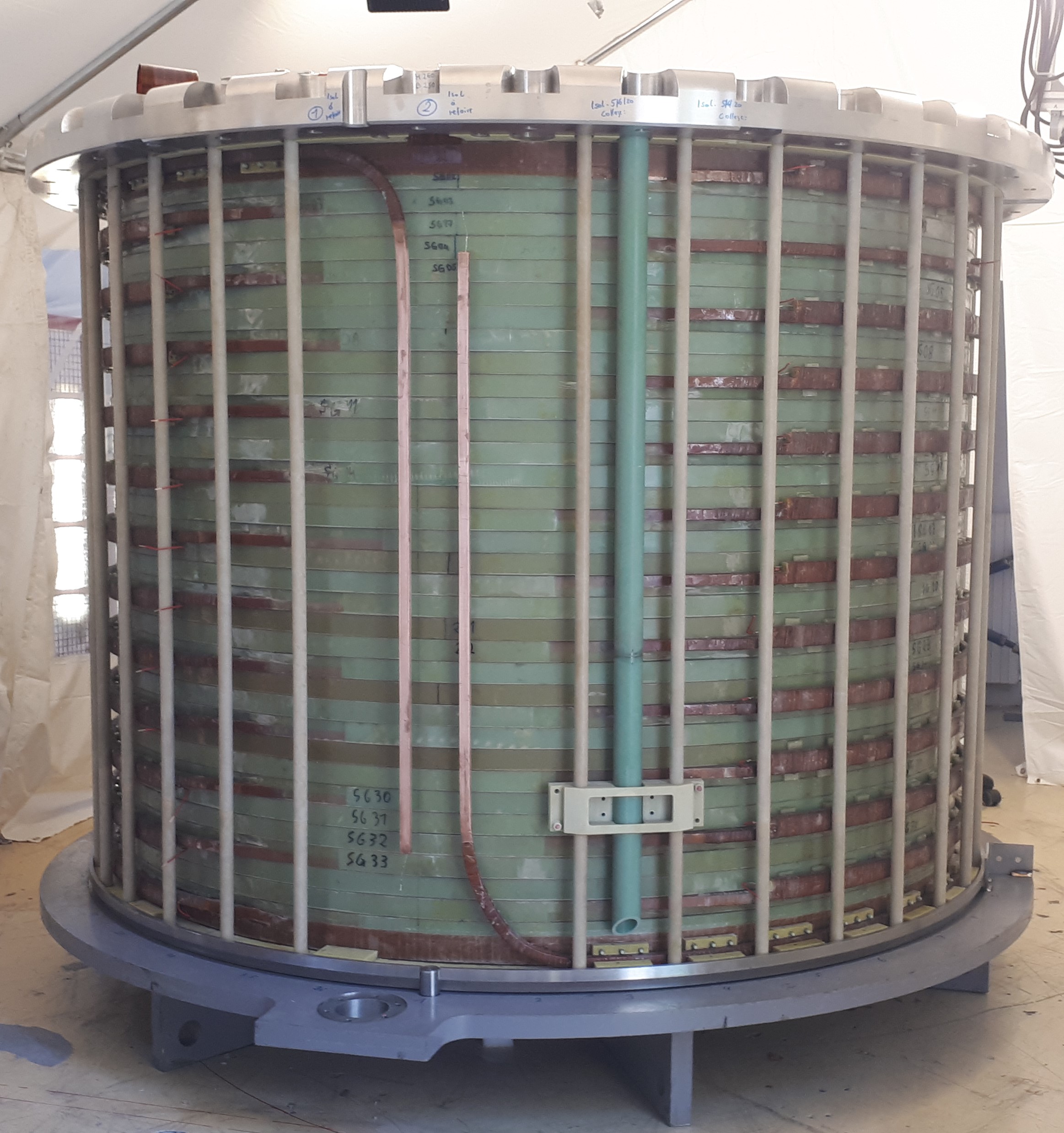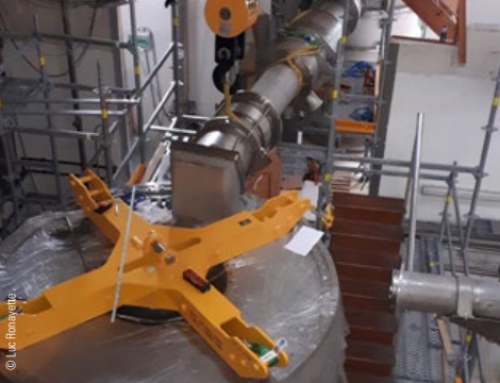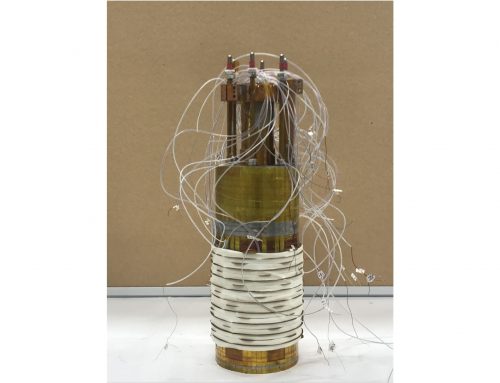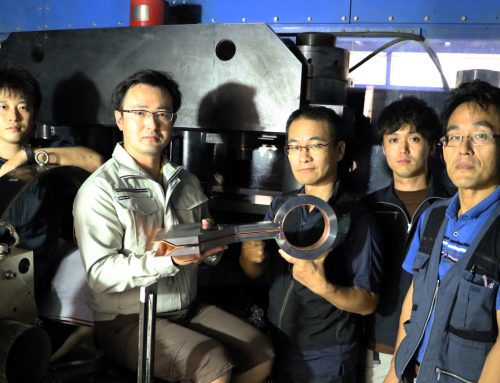Pierre Pugnat, Rolf Pfister, and Luc Ronayette, LNCMI-Grenoble.
The hybrid magnet in construction at LNCMI-Grenoble is based onthe combination of resistive inserts, made of Bitter and polyhelix coils, with a large-bore superconducting outsert. It will produce in a first step, an overall continuous magnetic field of 43 T in a 34 mm warm bore opening. The superconducting coil will provide a nominal magnetic field of 8.5 T in a 1.1 m cold-bore diameter. It relies on the novel development of a Nb-Ti/Cu Rutherford Cable On Conduit Conductor (RCOCC) cooled down to 1.8 K by a bath of superfluid helium at atmospheric pressure. The novelty of the RCOCC development concerns the assembly and the induction soft soldering of the multi-strand Rutherford cable on a Cu-Ag hollow stabilizer (Figure 1). This allows for a strict control of the interstrand contact resistance and, therefore, of the AC losses within the superconductor to prevent a magnet quench in case of resistive-insert voltage trips. Thorough tests and validation phases were conducted at LNCMIGrenoble as well as in industry prior to the in house industrial production of the RCOCC [1]. This included the trial production of the hard-drawn Cu-Ag hollow stabilizer in continuous lengths of 325 m as well as studies, developments, and integration of the industrial production line at LNCMI-Grenoble. The production of 43 RCOCC unit lengths wound in a single pancake of 2 m internal diameter was completed end of July 2017 and sent to the coil manufacturer Bilfinger Noell GmbH. We consider this as one the first great achievements of the project. A few months ago, a new milestone was achieved with the delivery of the superconducting coil at LNCMI-Grenoble. It consists of the thorough assembly of 37 double pancakes, vacuum impregnated separately (Figure 2), which can be exchanged in case of a serious damage during operation [2].
We focus now on:
> The construction of the cryogenic line connecting the cryogenic satellite to the magnet cryostat and
> The final assembly expected to end 2021.
This project is funded by the CNRS, the French Ministry of Higher Education and Research in the framework of the “Investissements pour l’avenir & Equipements d‘excellence” Equipex LaSUP (Large Superconducting User Platform), the European Funds for Regional Development (FEDER) and the Rhône-Alpes region.

Figure 1: Cross section of the produced RCOCC of dimensions 17.92 x 12.96 mm2


Figure 2: (a) The outsert superconducting coil (Weight = 21 tons, total height = 1551 mm and overall outer diameter = 2180 mm) delivered to LNCMI Grenoble together with (b) six spare double pancakes.
[1] In-house Industrial Production of the Superconducting Conductor for the 43 T Hybrid Magnet of LNCMI-Grenoble, P. Pugnat, T. Boujet, T. Disparti, P. Hanoux, C. Peroni, R. Pfister, M. Pissard, L. Ronayette, and J.M. Tudela, IEEE Trans. Appl. Supercond. 28, 4301005 (2018).
[2] From Manufacture to Assembly of the 43 T Grenoble Hybrid Magnet, P. Pugnat, R. Barbier, C. Berriaud, R. Berthier, T. Boujet, T. Disparti, P. Graffin, C. Grandclément, B. Hervieu, K. Juge, B. Mallery, F. Molinié, H. Neyrial, M. Pelloux, C. Peroni, R. Pfister, L. Ronayette, Hans J. Schneider-Muntau, and B. Vincent, IEEE Trans. Appl. Supercond. 30, 4300605 (2020).
https://ieeexplore.ieee.org/stamp/stamp.jsp?arnumber=8986553
Contact: pierre.pugnat@lncmi.cnrs.fr






